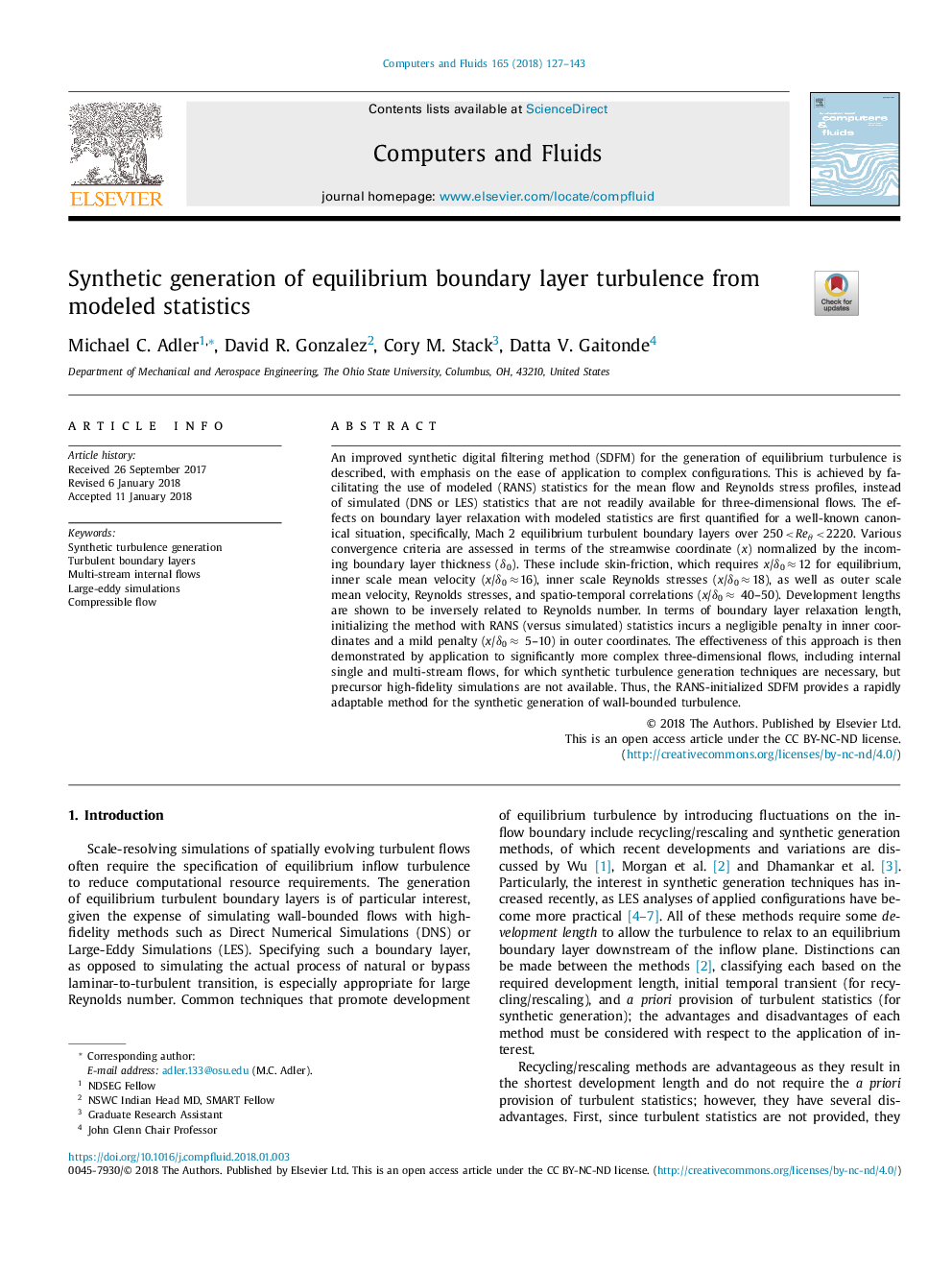| Article ID | Journal | Published Year | Pages | File Type |
|---|---|---|---|---|
| 7156383 | Computers & Fluids | 2018 | 17 Pages |
Abstract
An improved synthetic digital filtering method (SDFM) for the generation of equilibrium turbulence is described, with emphasis on the ease of application to complex configurations. This is achieved by facilitating the use of modeled (RANS) statistics for the mean flow and Reynolds stress profiles, instead of simulated (DNS or LES) statistics that are not readily available for three-dimensional flows. The effects on boundary layer relaxation with modeled statistics are first quantified for a well-known canonical situation, specifically, Mach 2 equilibrium turbulent boundary layers over 250â¯<â¯Reθâ¯<â¯2220. Various convergence criteria are assessed in terms of the streamwise coordinate (x) normalized by the incoming boundary layer thickness (δ0). These include skin-friction, which requires x/δ0â¯ââ¯12 for equilibrium, inner scale mean velocity (x/δ0â¯ââ¯16), inner scale Reynolds stresses (x/δ0â¯ââ¯18), as well as outer scale mean velocity, Reynolds stresses, and spatio-temporal correlations (x/δ0â¯â⯠40-50). Development lengths are shown to be inversely related to Reynolds number. In terms of boundary layer relaxation length, initializing the method with RANS (versus simulated) statistics incurs a negligible penalty in inner coordinates and a mild penalty (x/δ0â¯â⯠5-10) in outer coordinates. The effectiveness of this approach is then demonstrated by application to significantly more complex three-dimensional flows, including internal single and multi-stream flows, for which synthetic turbulence generation techniques are necessary, but precursor high-fidelity simulations are not available. Thus, the RANS-initialized SDFM provides a rapidly adaptable method for the synthetic generation of wall-bounded turbulence.
Related Topics
Physical Sciences and Engineering
Engineering
Computational Mechanics
Authors
Michael C. Adler, David R. Gonzalez, Cory M. Stack, Datta V. Gaitonde,
